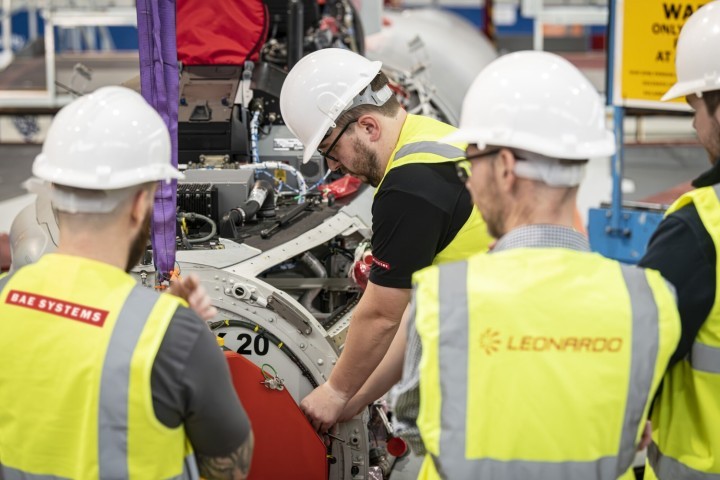Engineers at BAE Systems in Warton have installed a prototype of a next generation radar in anticipation of testing in the air.
The European Common Radar System (ECRS) Mark 2 radar is being developed by Leonardo UK and will later be integrated onto Royal Air Force Typhoon by BAE Systems' engineers in the county.
It features an innovative multi-functional array (MFA) that can perform both traditional radar functions such as search and targeting, as well as electronic warfare tasks.
This means that Eurofighter Typhoon will be able to locate and deny use of an adversary's radar with a powerful electronic jamming attack, whilst staying beyond the reach of threats. Typhoon is the RAF's frontline fighter jet which used
A prototype of the radar has been undergoing ground-based testing in a unique test facility at BAE Systems' site in Warton in recent months before being fitted on to BS116, a UK test and evaluation aircraft which operates from the site.
Andy Holden, radar delivery director, BAE Systems' Air sector, said: "Equipping the aircraft with this prototype radar moves us a step closer to delivering new capability which ensures Typhoon's role as the backbone of combat air defence for decades to come.
"We expect that this year we will be flight testing the radar which will allow us to validate the results of ground-based testing we have undertaken at our Integrated Test Facility (ITF), the only facility of its kind on the UK.
"The ITF testing allowed us to 'fly' the radar for hundreds of hours without the need to put a jet in the air, ensuring our flight test programme is as efficient as possible and delivers what our customer needs."
The radar will now undergo further integration work inside our Typhoon final assembly hangar at Warton with plans to flight test it this year.
The European Common Radar System, or ECRS, is theelectronically-scanning variant of radar which is in service with Typhoon aircraft operated by both Kuwait and Qatar.
The variant in-service is known as ECRS Mk0, and brings pilots much more situational awareness, providing a 50 per cent greater view to traditional radars.
It will equip RAF pilots with the ability to locate, identify and suppress enemy air defences using high-powered jamming. They can engage targets whilst beyond the reach of threats - even when they're looking in another direction - and operate inside the range of opposing air defences, remaining fully protected throughout.
Whereas traditionally radars are limited to a narrow, congested part of the radio frequency spectrum, the ECRS Mk2 operates across a far broader range of the electromagnetic spectrum. That provides a massive advantage because it can operate above or below the congested and contested frequencies where most fighter radars operate.
Enjoyed this? Read more from Tim Aldred























